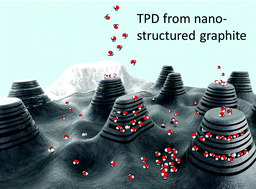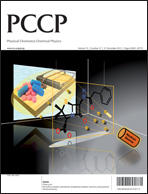Water desorption from nanostructured graphite surfaces
Abstract
Water interaction with nanostructured graphite surfaces is strongly dependent on the surface morphology. In this work, temperature programmed desorption (TPD) in combination with quadrupole mass spectrometry (QMS) has been used to study water ice desorption from a nanostructured graphite surface. This model surface was fabricated by hole-mask colloidal lithography (HCL) along with oxygen plasma etching and consists of a rough carbon surface covered by well defined structures of highly oriented pyrolytic graphite (HOPG). The results are compared with those from pristine HOPG and a rough (oxygen plasma etched) carbon surface without graphite nanostructures. The samples were characterized using scanning electron microscopy (SEM) and atomic force microscopy (AFM). The TPD experiments were conducted for H2O coverages obtained after exposures between 0.2 and 55 langmuir (L) and reveal a complex desorption behaviour. The spectra from the nanostructured surface show additional, coverage dependent desorption peaks. They are assigned to water bound in two-dimensional (2D) and three-dimensional (3D) hydrogen-bonded networks, defect-bound water, and to water intercalated into the graphite structures. The intercalation is more pronounced for the nanostructured graphite surface in comparison to HOPG surfaces because of a higher concentration of intersheet openings. From the TPD spectra, the desorption energies for water bound in 2D and 3D (multilayer) networks were determined to be 0.32 ± 0.06 and 0.41 ± 0.03 eV per molecule, respectively. An upper limit for the desorption energy for defect-bound water was estimated to be 1 eV per molecule.


 Please wait while we load your content...
Please wait while we load your content...